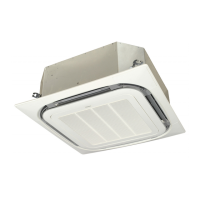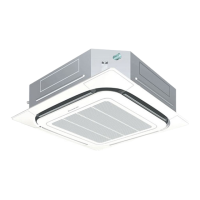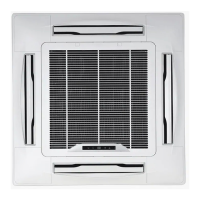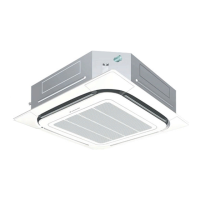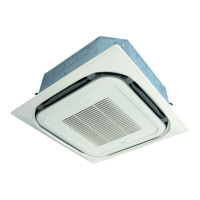What to do if Daikin FCQHG71FVEB Air Conditioner detects multiple master units?
- JJoshua MilesAug 8, 2025
If your Daikin Air Conditioner detects multiple master units, connect the remote controller to only one indoor unit.
What to do if Daikin FCQHG71FVEB Air Conditioner detects multiple master units?
If your Daikin Air Conditioner detects multiple master units, connect the remote controller to only one indoor unit.
What to do if Daikin FCQHG71FVEB has gas shortage due to clogging in refrigerant piping?
If you suspect clogging in the refrigerant piping system of your Daikin Air Conditioner, check for a failure to open the stop valve and any clogging within the refrigerant system.
What does excess indoor units connected error mean on Daikin FCQHG71FVEB?
This error will be displayed if five or more indoor units are connected to your Daikin Air Conditioner.
Why does my Daikin Heat Pump emit an odor?
If your Daikin Heat Pump emits an odor, it's likely due to room smells and cigarette odors that have accumulated inside the indoor unit. To resolve this, the inside of the indoor unit must be cleaned.
Records changes and updates to the service manual.
Essential safety guidelines for handling the equipment and performing repairs.
Explains the meaning of various icons used throughout the manual.
Introduces the service manual and its scope.
Lists and categorizes indoor and outdoor unit model names.
Provides visual representations of outdoor unit models.
Details the operational temperature limits for different unit types.
Information and procedures for wired remote controllers.
Information and procedures for wireless remote controllers.
Procedures for entering and using service modes.
Procedures for inspecting system operation.
Explains the role of key components and thermistors in the system.
Visualizes the operational logic for cooling and heating modes.
In-depth explanation of various system functions.
Procedures for performing operational tests after installation.
Configuring unit settings using the remote controller.
Configuring settings directly on the outdoor unit PCB.
Methods for operating the unit in emergency situations.
Routine checks for maintaining the unit.
Diagnosing issues based on observed symptoms.
Diagnosing issues using LED indicators.
Diagnosing issues via remote controller error codes.
| Model | FCQHG71FVEB |
|---|---|
| Category | Air Conditioner |
| Cooling Capacity | 7.1 kW |
| Heating Capacity | 8.0 kW |
| Power Supply | 220-240V / 1 Phase / 50Hz |
